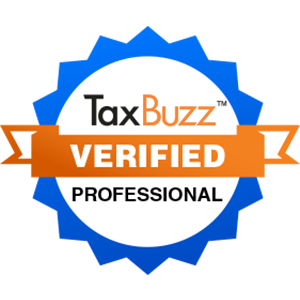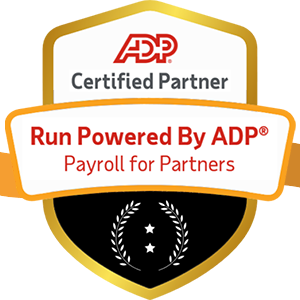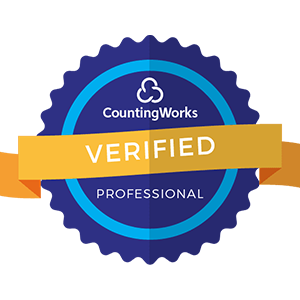
Picture this: It's open enrollment season, and your employees are drowning in a sea of benefit options, jargon-filled pamphlets, and looming deadlines. Sound familiar? If you're nodding your head, you're not alone. Open enrollment is often a stressful time for both HR professionals and employees alike. But what if we told you it doesn't have to be this way?
Welcome to your ultimate guide on mastering open enrollment communications. We're about to embark on a journey that will transform your approach to benefits communication, making it not just bearable, but actually engaging for your employees. Are you ready to revolutionize your open enrollment process? Let's dive in!
.jpg?width=2880&height=1458&name=Why%20Open%20Enrollment%20Communications%20Matter%20(More%20Than%20You%20Think).jpg)
Before we jump into the how-to's, let's talk about the why. Why should you care about crafting compelling open enrollment communications?
Picture this: Sarah from accounting is scrolling through her phone during lunch break. She sees your open enrollment email but decides to "deal with it later." Fast forward two weeks, and Sarah realizes she missed the deadline to adjust her health plan. Now she's stuck with a plan that doesn't cover her new medication.
This scenario isn't just frustrating for Sarah—it's costly for your company. Poor benefits communication can lead to:
Mind-Bending Stat: According to a study by Jellyvision, 55% of employees whose companies offer health insurance say they would be more likely to stay with their employer if they better understood their health benefits.
Now, flip the script. Imagine your open enrollment communications are so clear, engaging, and personalized that employees actually look forward to the process. They understand their options, make informed decisions, and feel genuinely appreciative of the benefits you offer.
This isn't just a pipe dream—it's entirely achievable with the right approach. And that's exactly what we're going to cover in this guide.
Before we dive into the nitty-gritty, let's talk about the overarching framework that should guide all your open enrollment communications: E-A-A-T. No, we're not talking about a new fad diet. This stands for Expertise, Authoritativeness, Accuracy, and Trustworthiness.
Demonstrate your deep understanding of the benefits landscape and your specific offerings. This doesn't mean drowning your employees in technical jargon—quite the opposite. Your expertise should shine through in your ability to explain complex concepts simply and clearly.
Position your HR team as the go-to source for all things benefits-related. Your communications should exude confidence and command respect, making employees feel they're in good hands.
In the world of benefits, accuracy is non-negotiable. Every piece of information you share must be 100% correct and up-to-date. One small error can lead to big problems down the line.
Build trust by being transparent, addressing potential concerns proactively, and always having your employees' best interests at heart. Remember, you're not just selling benefits—you're guiding employees towards better health and financial security.
With the E-A-A-T framework as our North Star, let's dive into the step-by-step process of crafting compelling open enrollment communications.

The first rule of effective communication? Know who you're talking to. And we mean really know them.
Your workforce likely spans several generations, each with their own communication preferences, benefit priorities, and levels of benefits literacy.
While generational insights are helpful, they're just a starting point. To truly connect with your employees, consider their:
Pro Tip: Consider conducting a pre-enrollment survey to gather this valuable information. Not only will it inform your communications strategy, but it will also make employees feel heard and valued.
One effective way to synthesize all this information is by creating employee personas. These are fictional but data-based representations of your different employee types. For example:
By crafting your communications with these personas in mind, you ensure you're meeting the diverse needs of your workforce.
Now that you know who you're talking to, it's time to tackle one of the biggest challenges in benefits communication: complexity.
As an HR professional, you eat, sleep, and breathe benefits. But remember, your employees don't. What seems obvious to you might be completely foreign to them. This is what psychologists call the "curse of knowledge"—the cognitive bias that makes it difficult for experts to remember what it's like to be a novice.
To overcome this:
Humans are hardwired for stories. We remember narratives far better than we remember facts and figures. Use this to your advantage by incorporating storytelling into your benefits communications.
For example, instead of just listing the features of a high-deductible health plan, tell the story of "How the Johnson Family Saved $3,000 with an HDHP." Walk through their decision-making process, how they used the plan throughout the year, and the positive impact it had on their finances.
In our increasingly visual world, incorporating graphics, infographics, and videos into your communications isn't just nice-to-have—it's essential.
Mind-Bending Stat: According to a study by 3M, visuals are processed 60,000 times faster than text. That's the power of visual communication!
In the age of Netflix recommendations and Amazon's "you might also like," employees expect personalized experiences—and benefits communications are no exception.
Personalization isn't all-or-nothing. There's a spectrum of personalization you can employ:
One simple yet powerful personalization technique is using the word "you" liberally in your communications. This immediately makes the content feel more relevant and engaging. Compare these two sentences:
The second sentence feels more direct and personal, doesn't it?
Consider implementing digital decision support tools that guide employees through the benefits selection process based on their individual circumstances. These tools can ask employees about their health status, financial goals, and risk tolerance, then provide personalized recommendations.
Pro Tip: Always be transparent about how you're using employee data for personalization. This builds trust and helps employees feel more comfortable with the process.
Your employees consume information in different ways. Some prefer email, others respond better to in-person presentations, while others might prefer text messages or app notifications. The key is to create a multi-channel strategy that reaches employees where they are.
Here's a menu of channels to consider:
Instead of dumping all your open enrollment information on employees at once, consider a drip campaign approach. This involves sending out smaller pieces of information over time, building up to the enrollment period. For example:
This approach prevents information overload and keeps benefits top-of-mind throughout the enrollment period.
Remember the marketing rule of seven? It states that a person needs to hear a message seven times before they'll act on it. While seven might not be the magic number for everyone, the principle holds true: repetition is key.
Don't be afraid to repeat your most important messages across multiple channels. Just make sure to vary the format and presentation to keep things fresh.
Engagement is a two-way street. Instead of just broadcasting information, create opportunities for employees to interact with the material and with each other.
Who says benefits have to be boring? Incorporate elements of gamification to make the process more engaging:
Encourage employees to share their own experiences with your benefits:
For companies on the cutting edge, consider incorporating VR or AR into your benefits education:
While these technologies are still emerging in the benefits space, they offer exciting possibilities for creating truly immersive and memorable experiences.

The work doesn't stop when open enrollment ends. To truly master your benefits communications, you need to measure their effectiveness and continuously improve.
Create multiple channels for employees to provide feedback:
Use this feedback to refine your approach for next year. Remember, mastering open enrollment communications is an ongoing process of learning and improvement.
As we wrap up this guide, let's distill everything we've covered into a manifesto for open enrollment communication excellence:
Remember, effective benefits communication isn't just about compliance or cost containment. It's about empowering your employees to make informed decisions that enhance their health, wealth, and overall well-being.
When you master open enrollment communications, you're not just managing a process—you're nurturing a culture of care and empowerment.
So, are you ready to transform your open enrollment communications? Your employees—and your bottom line—will thank you.


